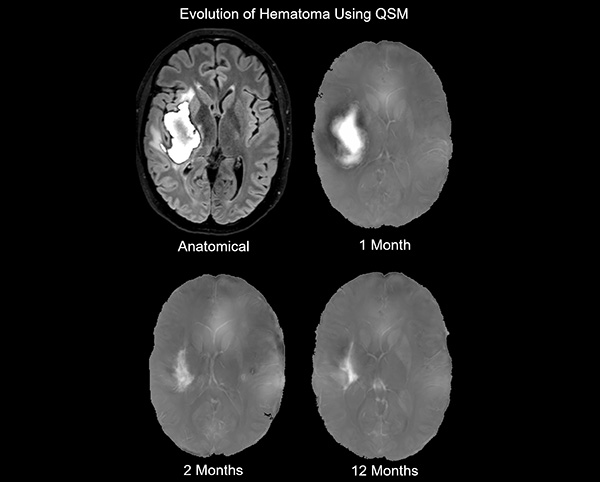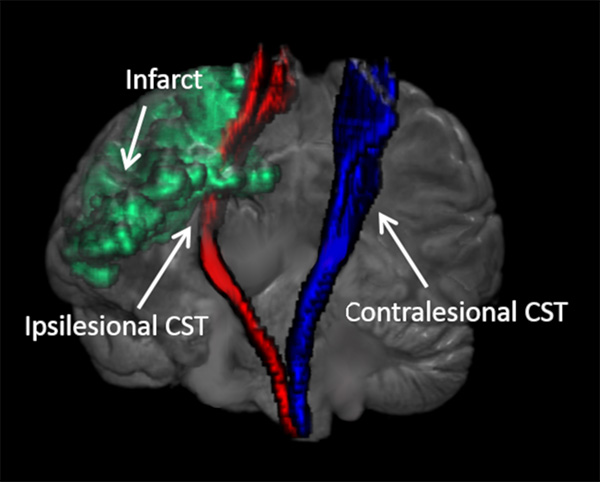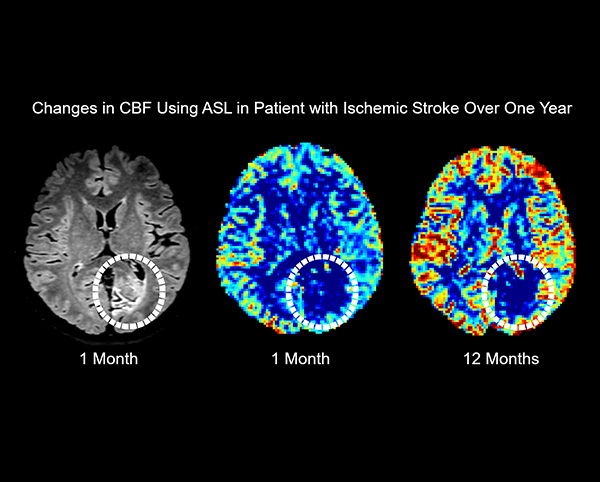
The Imaging core of the Stroke Institute provides neuroimaging services for all areas of stroke and cerebrovascular disease. Our core is led by stroke recovery arm led by Dr. Muhammad Haque.
Clinical and Translational MR Stroke Imaging Core
Dr. Muhammad Haque
The primary emphasis of the clinical and translational MR stroke imaging core is to develop qualitative and quantitative surrogate markers of the post-stroke prognosis, secondary degeneration, recovery, and treatment efficacy.The neuroimaging scientists at the Magnetic Resonance Image Processing Stroke Core are ready to assist you with your clinical and preclinical imaging needs by designing experiments, optimizing image acquisition protocol, and data analysis. Imaging protocols are designed to evaluate ischemic and hemorrhagic post-stroke lesion volume, white matter integrity, chronic neuronal loss, rate of brain atrophy, cerebral blood perfusion, neuronal circuitry, and metabolic profile.
Typical image acquisition protocol includes: high resolution 3D anatomical images, diffusion tensor imaging, arterial spin labeling, quantitative susceptibility imaging, magnetic resonance spectroscopy, resting state functional MRI.
Quantitative image processing includes: Voxel based morphometry, diffusion tensor matrix, deterministic and probabilistic tractography, cerebral blood volume and cerebral blood flow, lesion segmentation, neuronal network, cortical thickness, iron concentration and metabolite concentration.
We apply matlab based processing code using commercial and freeware software packages such as Analyze, e-film, SPM, FSL, DTI_Studio, STI etc.
The Imaging Core also serves as the imaging analysis center for international stroke trials including the following:
- A Double-Blind, Controlled Phase 2b Study of the Safety and Efficacy of Modified Stem Cells (SB623) in Patients With Chronic Motor Deficit From Ischemic Stroke – Sunovion and San Bio, Inc
- A Double-Blind, Controlled Phase 2 Study of the Safety and Efficacy of Modified Stem Cells (SB623) in Patients With Chronic Motor Deficit From Traumatic Brain Injury (TBI) – San Bio, Inc
- Sedation versus General Anesthesia for Endovascular Therapy in Acute Ischemic Stroke – a Randomized Comparative Effectiveness Trial (SEGA)
Brain Hemorrhage and Recovery

Evolution of Hematoma

Ischemic Stroke and Recovery

Imaging Team


McGovern Medical School at UTHealth Houston
